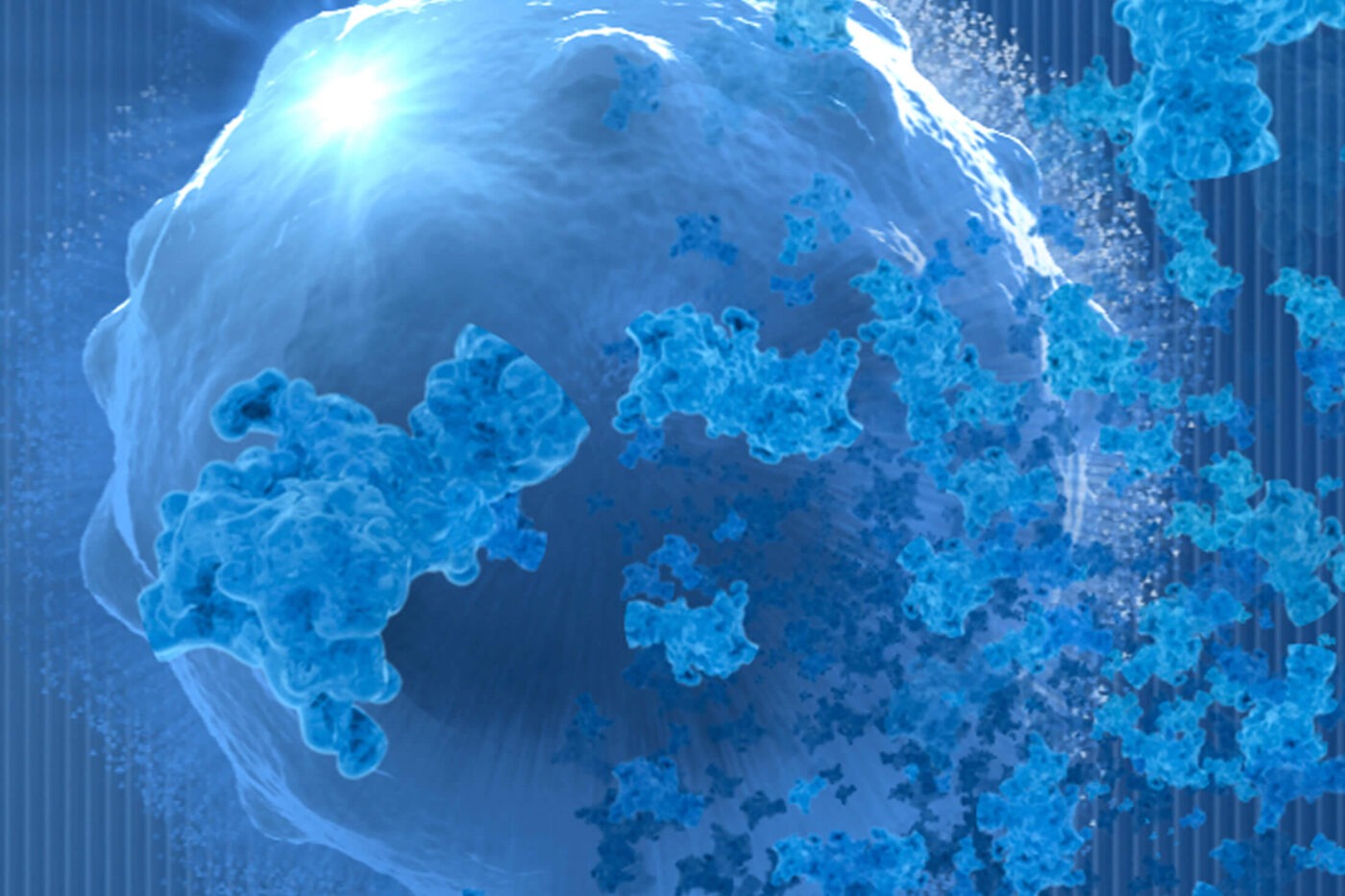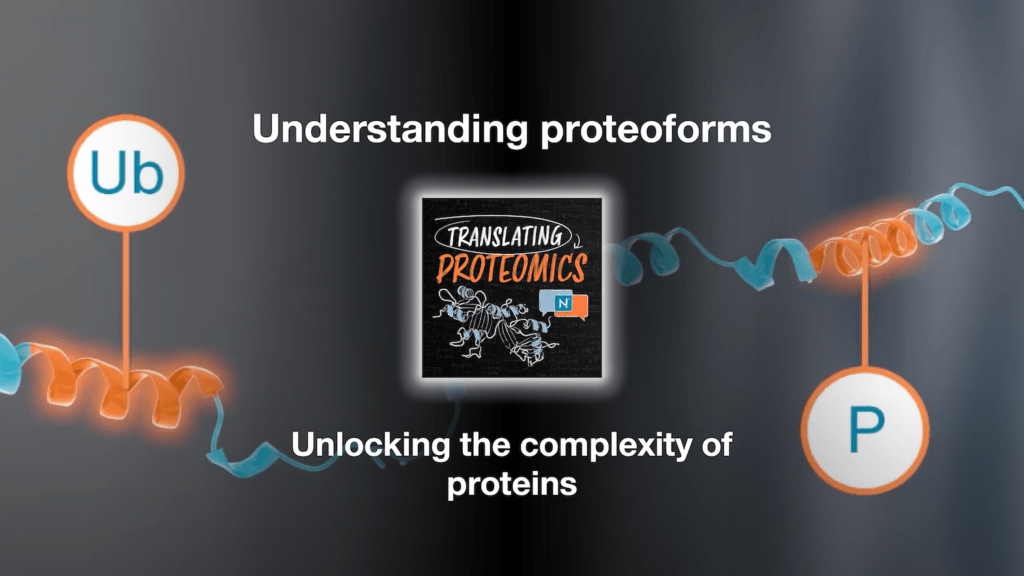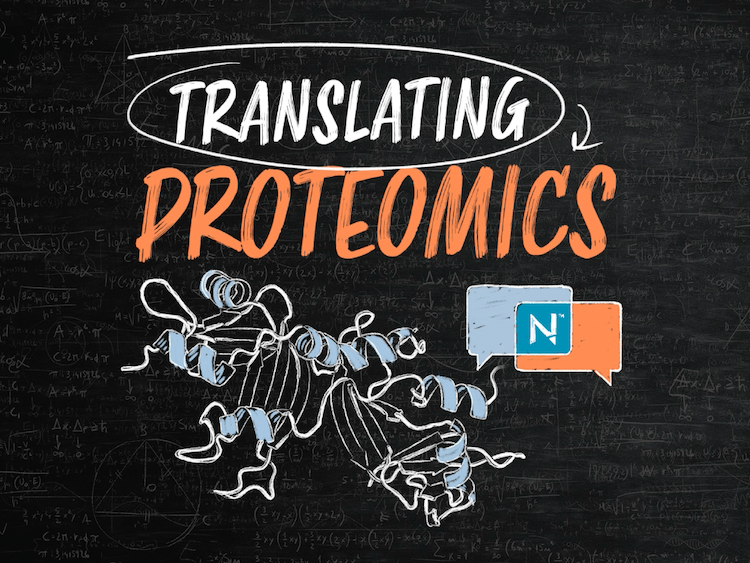
Understanding proteoforms – Unlocking the complexity of proteins
Nautilus Biotechnology
October 1, 2024

Proteins are often considered simple workhorses — chains of amino acids folded neatly to do their jobs. However, researchers have learned to appreciate their dynamic nature in recent decades. Post-translational modifications, among other things, give proteins immense power to adapt, giving rise to the dizzying complexity of biology and influencing everything from immune responses to cancer progression. Variants of proteins with defined sets of alterations coming from post-translational modifications, genetic polymorphisms, mRNA splicing, or any other source are called proteoforms. Proteoforms drive dynamic biological functions and clear views of them are necessary to understand how biology works.
On the seventh episode of the Translating Proteomics podcast, Nautilus Co-Founder and Chief Scientist Parag Mallick speaks with Senior Director of Scientific Affairs and Alliance Management Andreas Huhmer about the value of studying proteoforms and what’s required to bring proteoform measurement into mainstream biology research.
“We’re seeing a tremendous groundswell of interest and awareness of the importance of proteoforms,” says Parag. “We’re seeing numerous articles spread throughout the community in different forums about how proteoforms are critical to biology.”
However, for proteoforms to truly propel drug development and biomarker discovery forward, we need the tools to measure them routinely. Only then can proteoforms help unlock some of biology’s most persistent mysteries, from revealing new insights into disease mechanisms to offering new proteomics applications.
What are proteoforms, and why do they matter?
Modifications like phosphorylation and methylation alter a protein’s function, location, and interactions. However, proteoforms are more than just variations on a theme. They are distinct entities with patterns of modification that drive many of biology’s complex processes. Each proteoform is defined by its full set of modifications whether those modifications come from alternative splicing, post-translational modification, or any other source.
“There may be six million or more different proteoforms,” says Parag. “These unique versions of proteins each behave differently, they’re regulated differently, and they drive how biology functions.” And that’s just six million different proteoforms per cell type! While there may be many redundant proteoforms in different cell types, the number of unique proteoforms in all cell types may be quite a bit larger than that.
Watch this episode of Translating Proteomics to get an introduction to proteoforms from Parag and Andreas:
Measuring proteoforms: The challenge
Despite their importance, measuring proteoforms presents a formidable challenge. Traditional tools, such as bottom-up mass spectrometry cannot identify proteoforms because they break proteins apart before analysis and the original patterns of modification to the intact proteins cannot be determined. Top-down mass spec analyzes full-length proteins and is better suited to proteoform analysis, but cannot always identify the subtle differences between proteoforms and is difficult to implement at scale.
The differences between proteoforms might appear small, but their impact is significant. They can change how proteins work and where they go in the cell, Andreas notes.
Parag also points out that if each protein has potentially 50 different modifications, “that hypothesis space is gargantuan.” That is, there is an astronomical number of possible proteoforms (which are by definition lower abundance than proteins) and knowing which ones are biologically meaningful, even if they come in low abundance, is essential. Emerging technologies could soon offer the sensitivity and throughput needed to measure proteoforms that were previously inaccessible.
Watch Andreas and Parag discuss the advances needed to understand proteoform biology:
The impact of proteoforms on biology
Proteoforms push us beyond the central dogma of biology — DNA to RNA to protein. They reveal a dynamic and complex system where a single protein can perform multiple functions depending on its patterns of modification. This opens up entirely new avenues for biological research and medical breakthroughs.
“Proteoforms open up more functionality,” says Andreas. “It’s an elegant way to change the structure and have completely different interactions with other parts of the cell.”
This dynamic aspect of proteoforms is critical when considering rapid cellular responses to stimuli, such as stress or disease, where proteoform changes can occur in seconds. “Phosphorylating something can happen very quickly,” Parag says.
It’s another reason we need to think of biology as a movie, not a snapshot. A single snapshot of a protein at one moment in time won’t reveal the whole story. Identifying changes to proteoforms over time offers a potential path for understanding things that happen very quickly in cells.
Watch Parag and Andreas discuss why proteoforms are important:
Why proteoforms are key in medicine
The potential applications of proteoforms in medicine are immense. From more accurate diagnostics to advanced therapeutic strategies, proteoforms could revolutionize the field. For example, instead of targeting a whole protein family in a cancer therapy, we could design drugs to target specific proteoforms, making treatments more precise and reducing side effects.
“There may be a world where we have proteoform-specific drugs,” Parag says. “Where there’s a particular proteoform that is bad and instead of developing therapeutics that go after total protein, they target the specific proteoform to deplete it or direct it for degradation.”
Proteoforms could also improve biomarker discovery. For instance, certain glycosylated forms of the prostate-specific antigen (PSA) have been found to be more indicative of prostate cancer than others, and could serve as biomarkers for the disease. Similarly, you can measure changes in patterns of phosphorylation to the tau protein as Alzheimer’s disease progresses. Such changes may even hint at the mechanisms that lead to advanced disease. Measuring specific proteoforms in these cases could enhance the accuracy of tests and lead to earlier diagnoses.
Advancing proteoform research: What’s next?
To fully unlock the potential of proteoforms, we need new tools—tools that can handle the complexity and subtlety of these protein variants. Mass spectrometry can only go so far in identifying large proteins or detecting low-abundance proteoforms.
High sensitivity, single-molecule measurements of full-length proteins are needed to effectively analyze proteoforms. Indeed, single-molecule proteomics capabilities will be key to understanding the subtle variations that define proteoforms
For their part, Andreas and Parag are bullish on the potential of proteoform analysis. “Really what I’d like to see in my lifetime, if that’s possible, I’d like to see every single western blot or immune assay replaced with a proteoform measurement,” says Andreas.
Parag doesn’t go quite so far — western blots might still play a role in research— but he agrees: proteoform measurements are the future.
Fortunately, technologies like the Nautilus ProteomeTM Analysis Platform are poised to help researchers unlock the full potential of proteoforms in the coming years. The Nautilus Platform is designed with single-molecule proteomics capabilities at its core. It is uniquely suited to probe the intricacies of proteoforms and unravel the complexities of biology. Learn more in this animation.
Conclusion
Researchers are beginning to recognize the critical roles proteoforms play in directing the processes of life. By revealing the many functional forms proteins take, and how those forms underlie myriad biological activities, researchers can use proteoforms to revolutionize both basic biology and medicine.
“We’re seeing an emergence of really powerful technologies that are able to look at proteoforms at a level of detail we’ve never seen before,” Parag says. New insights into biological mysteries await, hidden inside the millions of subtle, though impactful, protein variants.
MORE ARTICLES

